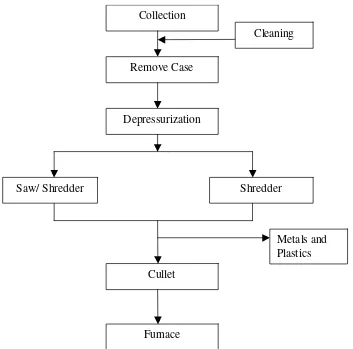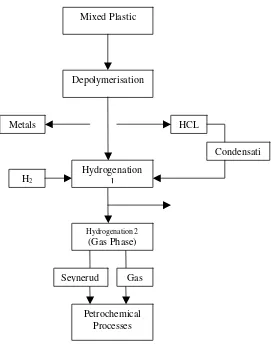Study Recycling of Plastic and CRTs from Electronic Waste
PREETI JAIN¹, MUKATA RANI BHAWSAR² and JITENDRA BHAWSAR³
¹Department of Chemistry, Medicaps Institute of Technology & Management, Indore - 452001 (India). ²Sinergy Institute of Technology, Dewas (India).
³Medicaps Institute of Technology & Management, Indore (India).
(Received: January 01, 2009; Accepted: March 08, 2009) ABSTRACT
The major objective of this paper is to build capacity of practitioners and decision makers to guide and handhold them to plan, design and implement E-waste management. It includes policy, collection, transportation and treatment in a city geographical area and country, here is a scope of further reduction of technology costs if the developing country has got infrastructure to for the local fabrication of machinery and equipment. A key recommendation is that the outstanding logistics issues are addressed in order to enable recyclers to define optimized processes for materials acquisition, processing and recovery. WEEE deposited at CA and other central collection sites should be segregated as far as possible into distinct streams that are compatible with subsequent transport and recycling technology choices. There is an ongoing need to educate designers regarding choices of materials and the implications of their choices on materials recycling.
Keywords: E-waste, waste management, E-waste Treatment Systems, CRTs, Plastic, etc.
INTRODUCTION
Electronic products are made from valuable resources, including precious and other metals, engineered plastics, glass, and other materials, all of which require energy to source and manufacture. Many electronic products also contain parts that could be profitably refurbished and reused with little effort. Recycling reduces the need for landfills and other disposal facilities. In addition, throwing away old electronic equipment generates additional pollution associated with the need to access virgin materials and manufacture new products.
Many of the components in discarded electronics contain toxic constituents. An average desktop computer (monitor, central processing unit and accessories) is made up of many different heavy metals and plastics.
Many materials used in the construction of computer hardware can be recovered in the
recycling process for use in future production. Reuse of tin, silicon, iron, aluminum, and a variety of plastics, all present in bulk in computers can reduce the costs of constructing new systems. In addition, components frequently contain copper, gold, and other materials valuable enough to reclaim in their own right.
E-Waste Toxins
incinerators and open burning, allowing toxic substances to leach into the environment. The e-waste directed to recycling in most of the countries does not get recycled there at all but is put on container ships and sent to countries such as China and elsewhere, electronic waste is being sent to these countries for processing. Uncontrolled burning, disassembly, and disposal are causing environmental and health problems, including occupational safety and health effects.
METHOD AND MATERIAL
CRT treatment technology
CRT segregated after first level WEEE/ E-waste treatment
1. Dismantling: CRT is manually removed from plastic/ wooden casing.
2. De-pressurization and Splitting: Picture tube is split and the funnel section is then lifted off the screen section and the internal metal mask can be lifted to facilitate internal phosphor coating. Different types of splitting technology used are given below. • Ni Chrome hot wire cutting: A Ni Chrome wire or ribbon is wrapped round a CRT and electrically heated for at least 30 seconds to cause a thermal differential across the thickness of the glass. The area is then cooled (e.g. with a water-soaked sponge) to create thermal stress which results in a crack. • Thermal shock: The CRT tube is subjected to localized heat followed by cold air. This creates stress at the frit line where the leaded funnel glass is joined to the unleaded panel glass and the tube comes apart.
• Laser cutting: A laser beam is focused inside
Shredder
Remove Case
Depressurization
Saw/ Shredder
Collection
Cullet
Furnace
Cleaning
Metals and
Plastics
and this heats up the glass. It is immediately followed by a cold water spray that cools the surface of the glass and causes it to crack along the cut line.
• Diamond wire method: In this method, a wire with a ver y small diameter, which is
embedded with industrial diamonds, is used to cut the glass as the CRT is passed through the cutting plane.
• Diamond saw separation: Diamond saw separation uses either wet or dry process. Wet saw separation involves rotating the CRT
Table 1: Material constituents of consumer electronics in the Municipal waste stream (in percent of total generation)
Type of Steel Copper Al Lead Other Glass Wood Plastic Other
Consumer & Brass Metals
Electronics
Video 22% 3% 0% 7% 10% 27% 20% 11% 0%
Products
Audio 21% 0% 0% 0% 30% 0% 3% 47% 0%
Products
Information 27% 5% 4% 3% 4% 8% 0% 46% 2%
Products (Includes Computers.etc.)
Total 24% 3% 2% 4% 11% 15% 9% 32% 1%
Mixed Plastics
Mechanical
Recycling
Thermal
Recycling
Chemical
Recycling
Refinery or
Metal
Smelter
Shredding,
Identification
& Separation
Power
Generator
Or Cement
Kiln
New Raw
Materials
Palletized and
New Products
Alternative
Fuel
vacuum system to clean the inside and recover the coating.
5. Shredding Plastic Recycling
There are three different types of plastic recycling options i.e. chemical recycling, mechanical recycling and thermal recycling. All the three processes are shown in figure 1.2, 1.3 and 1.4 .In chemical recycling process, waste plastics are used as raw materials for petrochemical processes or as reductant in a metal smelter. In mechanical recycling process, shredding and identification process is used to make new plastic products. In thermal recycling process, plastics are used as alternative fuel. The first step is sorting process, where contaminated plastics such as laminated and/ or painted plastics are removed. The methods, which may be used for sorting, are grinding, cryogenic method, abrasion/ abrasive technique, solvent stripping method and high temperature aqueous based paint removal method. Any of the method is used for removal of paints and coating from waste plastics. Shear-shredder and hammer mills are generally used for size reduction and liberation of metals (coarse fraction) followed by granulation and milling for further size reduction. Granulators use a fixed screen or grate to control particle size, while hammer mills allow particles between hammers and the walls to exit the mills. Magnetic separators are used for ferrous metals separation, while eddy current separators are used for non ferrous metals separation. Air separation system is used to separate light fractions such as paper, labels and films.
Resin identification can be carried out by hydrocyclones, triboelectric separator, high speed accelerator and X-ray fluorescence spectroscopy. Different plastic resins are mixed and contact one another in a rotating drum to allow charging. Negatively charged particles are pulled towards the positive electrode and positively charged particles are pulled towards negative electrode. This technique has been found to be most effective for materials with a particle size between 2-4 mm. X-ray fluorescence spectroscopy is effective in identifying heavy metals as well as flame-retardants. After identification and sorting of different resins, Shredder
(Size Reduction)
Magnetic Separation
Eddy Current Separation
Air Separation
Resin Identification
Extrusion
Pellerizing
Metals, fluff, fines
Ferrous Metals
Non-Ferrous Metals
Labels, Films Sorting
Fig. 3: Mechanical Recycling
in an enclosure while one or more saw blades cut through the CRT around its entire circumference. Coolant is sprayed on to the surface of the saw blades as they cut. This is to control temperature and prevent warping. • Water jet separation: This technology uses a high-pressure spray of water containing abrasive, directed at the surface to be cut. The water is focused through a single or double nozzle-spraying configuration set at a specific distance.
Thermal Recycling Process
In thermal recycling process, plastics are used as fuel for energy recovery. Since plastics have high calorific value, which is equivalent to or greater than coal, they can be combusted to produce heat energy in cement kilns.
CONCLUSION
Third-world countries, generally less concerned with worker safety or environmental issues, utilize methods that are not only more harmful, but also more wasteful. The most expedient and most prevalent method is to simply toss equipment onto an open fire, in order to melt plastics and burn away anything that's not valuable metal. This creates acrid smoke full of carcinogens and neurotoxins that linger in the air, shrouding regions they are extruded and palletized
1. Mixed plastic waste is first de-polymerized at about 350-400°C and dehalogenated (Br and Cl). This step also includes removal of metals.
2. In hydrogenation unit 1, the remaining polymer chains from depolymerized unit are cracked at temperatures between 350-400° C and hydrogenated at pressure greater than 100 bar. After hydrogenation, the liquid product is subjected to distillation and left over inert material is collected in the bottom of distillation column as residue, hydrogenation bitumen.
3. In hydrogenation unit 2, high quality products like off gas and sync rude are obtained by hydro treatment, which are sent to petrochemical process.
Fig. 4: De-polymerization of plastics and conversion process
Metals
HCL
Condensati
Petrochemical
Processes
Gas
Seynerud
Hydrogenation 2
(Gas Phase)
Hydrogenation
1
H
2in a deadly smog. Any refuse left over from these bonfires are disposed of as quickly as possible, generally into a drainage ditch or waterway, where they will be swept into the ocean or local water supplies. Children are frequently employed in these dangerous recycling methods.
There is an urgent need for clarification of the overall process that takes end of-life products from the final user to the recycler. A key recommendation is that the outstanding logistics issues are addressed in order to enable recyclers to define optimized processes for materials acquisition, processing and recovery. If recycled mater ials from WEEE are to be successfully used in new applications more detailed consideration must be given to the development and support of end markets for these materials. WEEE deposited at CA and other central collection sites should be segregated as far as possible into distinct streams that are compatible with subsequent transpor t and
recycling technology choices. There is an ongoing need to educate designers regarding choices of materials and the implications of their choices on materials recycling. There is a good incentive to recycle large "white goods" because of the relative accessibility and value of the metal content. They account for 51 per cent by weight and 11 per cent by units of all arising. About 77 per cent of recycled WEEE arises from large household appliances (including fridges).
The computer recycling rate is likely to increase somewhat without implementing additional programs as the existing infrastructure is more fully used. But without some additional actions, it is unlikely the capture rate for computers will move towards even the 50% overall recycle rate goal in the State Solid Waste Management Plan. Also, without additional actions, it is unlikely the recycling of other electronic wastes will show significant improvement.
1. Annexure J, Table No J1, Electronics Waste Recovery Study, Prepared for Resource Recovery Fund Board, Nova Scotia, by PHA Consulting Associates, 31st March (2006). 2. Compendium on National WEEE Legislation
United Nations University, United Nations Environment Program, (2006).
3. EPA (2001) Waste from electrical and electronic equipment in Ireland: a status report. EPA Topic Report, Cork Institute of Technology and Environmental Protection Agency, Ireland, pp 68-69.
4. Jain Amit and Sareen Rajneesh; E-waste assessment methodology and validation in India, Journal of Material Cycles and Waste Management, Volume 8, Number 1 / March, (2006), Springer-Verlag.
5. Management of Waste Electrical & Electronic
Equipment, ACRR (2003).
6. Mechanical Recycling of Consumer Electronic Scrap. Licentiate Thesis 2005:36, Luleå University of Technology, Luleå, Sweden, Cui.j, (2005).
7. QWERTY and Eco-Efficiency analysis on cellular phone treatment in Sweden. TU Delft, the Netherlands, (2004).
8. Sinha -Deepali Khetriwal, Kraeuchi Philipp, Schwaninger Markus, A comparison of electronic waste recycling in Switzerland and in India, Environmental Impact Assessment Review 25 9 492-504, ELSEVIER. (2005) 9. Wastes Electrical and Electronic Equipment



